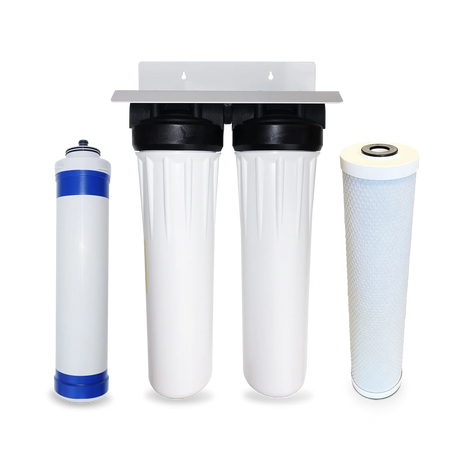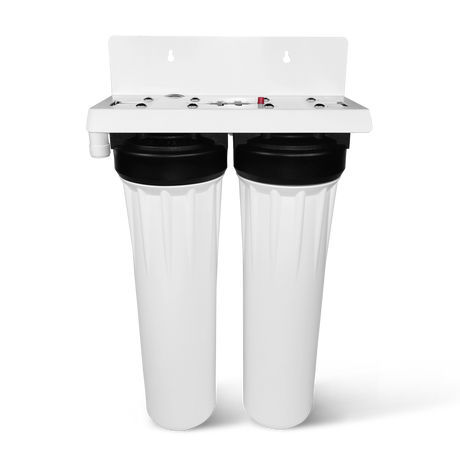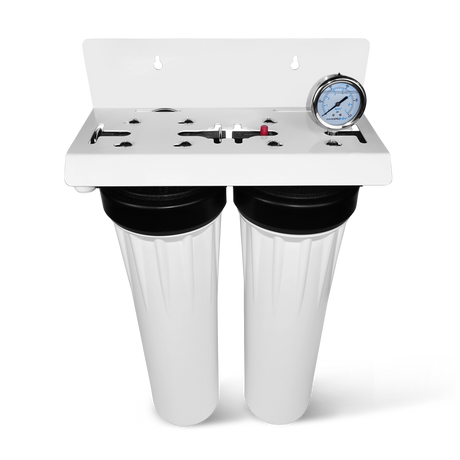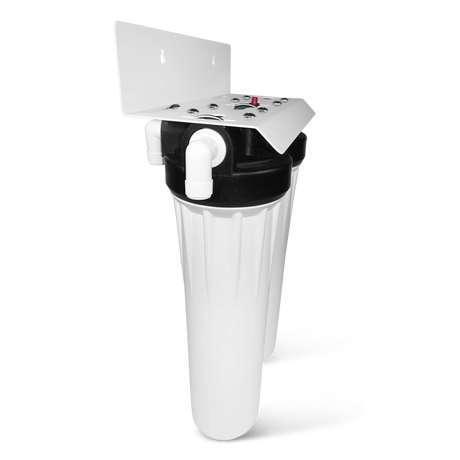GenX Water Crisis: North Carolina's Battle Against Toxic Contamination

Introduction to the GenX Water Contamination Issue
Pollution, including the commercial dumping of chemicals and byproducts, has created numerous issues worldwide. Since early June 2017, there has been significant media attention on GenX chemical tainting North Carolina drinking water. This article aims to provide an unbiased overview of the issue, covering what GenX is, its potential side effects, and how to remove it from water.
Key points about the GenX water crisis:
- GenX may have been present in the Cape Fear River since 1980.
- Wilmington, North Carolina is notably affected, with tens of thousands of residents potentially consuming GenX-tainted water.
- There are no federal drinking standards for GenX in water.
- The health effects of GenX are not entirely known, causing significant public safety concerns.
Important Note: As of January 10, 2018, no water filtration system has been certified for removing GenX. However, reverse osmosis is currently considered the best protection against GenX contamination.
What Is GenX and Where Did It Come From?
In 2009, DuPont - a scientific engineering company founded as a gunpowder mill in 1802 - introduced GenX as an alternative for the perfluorooctanoic acid used to synthesize Teflon. As such, the chemical is considered essential in the production of household items like non-stick pans and firefighting foam.
DuPont has described GenX as having a more "favorable toxicological profile" than perfluorooctanoic acids (PFOA), and they were given a consent order from the Environmental Protection Agency (EPA) to make it commercially available. Increasing legal challenges based on research proving PFOA's dangerous health effects were a major factor in bringing GenX into use, giving it status as an "emergency chemical".
Despite this promising description, the compound is not very well understood at present. It can take as long as 20 years for a chemical to be regulated according to federal standards, and at present there are no test protocols designed for modulating GenX.
Understanding GenX Contamination in Water
It's difficult to detect GenX in water, let alone extract it, as it's a "water-loving chemical". This poses a very real problem for researchers attempting to understand the behavior of GenX in water, according to Dr. Detlef Knappe, a professor at the North Carolina State University who contributed to studies published in November 2016.
The GenX chemical bonds are also incredibly strong, which makes the compound resistant to the water treatment processes used to degrade pollutants and provide a cleaner, safer water supply. Such processes are successfully used to minimize and/or eliminate water contamination at water treatment plants such as the one in Sweeney.
This makes it nearly impossible to properly filter the relatively high levels of GenX in water supplies across the state, causing major concern for residents and corporations aware of the GenX contamination crisis.
How GenX Entered The Water Supply: Causes of Contamination
Studies have discovered GenX in water from the Cape Fear River and Cape Fear Public Utility on at least three occasions since 2012. Samples collected in 2013-14 revealed an average reading of 631 parts per trillion.
In a recent meeting with local and state officials, representatives of the DuPont spin-off company Chemours Co. admitted that the Fayetteville Works site - about 100 miles upriver from Wilmington - is a potential culprit for the discharge of GenX in water supplies.
Controversially, the company has also stated that they don't believe the GenX production project is to blame, claiming to adhere to the 99 percent capture limit detailed in their 2009 EPA consent order. As a result, they don't believe the process causes any discharge of GenX in water on the site.
Instead, they believe the GenX contamination to be the result of a vinyl ether process from a separate project on the site. As the GenX created this way is merely a by-product rather than intentional, the discharge is not regulated.
Is It Safe to Drink Water Contaminated with GenX?
Because of the difficulties in studying the effects of GenX in water, there is no clear answer to this crucial question. Woody White, the New Hanover County Commissioners Chairman, asked Chemours officials whether they believed the water was safe to drink.
Chemours' Product Sustainability Director Kathy O'Keefe stated that it was the company's official opinion that the current levels of GenX in water in the Cape Fear River is safe to drink and won't pose any health risks.
While White admits that he personally feels the water is safe, he is hesitant to accept Chemours' response. He offered a glass of tap water to everyone present at the meeting, and noted that none of the Chemours officials - including O'Keefe - seemed to have drunk any.
What Does the CFPUA Know About GenX Contamination in Water?
A major point of concern is the fact that the Cape Fear Public Utility Authority (CFPUA) were only made aware of the GenX contamination issue in May 2016, and the board notified in June that same year. CFPUA's Executive Director had previously stated that they were only made aware of GenX in water supplies in November last year, a statement recently corrected by Michael Brown, the CFPUA board chairman.
Brown has also since made a statement promising that one of the board members, Jennifer Adams, will be looking into the company's past involvement in the NCSU's study. Adams' investigation is also to include communication by the CFPUA in creating public awareness of GenX contamination, which came under scrutiny during a recent meeting with officials.
White announced that he was not satisfied with steps taken by Chemours or the CFPUA to bring the issue of GenX contamination to the attention of the health department and the general public. Acknowledging that it wasn't necessarily an intentional oversight by either company, he offered a respectful request and encouragement that both parties be more open with similar issues in future.
Mike Johnson - the Fayetteville Works' environmental manager - claims that new technology installed by the company in November 2013 has successfully cut GenX in water sources around the site down to 100 parts per trillion. Johnson also reports that the company is looking into possible alterations to the production process and/or project to help further reduce the levels of GenX contamination.
In an attempt to speed up research into preventative measures, Chemours' Senior Communications Manager Gary Cambre has testified that results from "extensive health and safety testing" has been shared with other regulation agencies and scientific publications around the world.
The CFPUA provided further samples of GenX in water that lead to the November 2016 publication of a study, which announced that the water supply meets all federal and state standards. However, their Chief Operations Officer Frank Styers recently released a memo for board members recommending that the GenX chemical be better regulated.
Local and national officials have also requested that Chemours stop all operations resulting in the production of the compound in an attempt to eliminate GenX contamination of the water supply. The Wilmington Mayor, Bill Saffo, asked the EPA and North Carolina Department of Environmental Quality to suspend all operations resulting in GenX contamination until proper regulation and filtration methods have been developed and can be implemented.
The North Carolina DEQ has indeed launched a formal investigation into the matter of GenX in water supplies across the state. While no official motion has been made to suspend activities resulting in GenX production (as a by-product or otherwise), the investigation is said to include strict testing of water near the Fayetteville Works site over the next three months.
N.C. DEQ's secretary, Michael Regan, has stated that it's too early to say whether or not the company will be facing any legal punitive action, as they are not breaking any current laws. However, the tests described above will be paid for by Chemours.
Mike Johnson - the Fayetteville Works' environmental manager - claims that new technology installed by the company in November 2013 has successfully cut GenX in water sources around the site down to 100 parts per trillion. Johnson also reports that the company is looking into possible alterations to the production process and/or project to help further reduce the levels of GenX contamination.
In an attempt to speed up research into preventative measures, Chemours' Senior Communications Manager Gary Cambre has testified that results from "extensive health and safety testing" has been shared with other regulation agencies and scientific publications around the world.
The CFPUA provided further samples of GenX in water that lead to the November 2016 publication of a study, which announced that the water supply meets all federal and state standards. However, their Chief Operations Officer Frank Styers recently released a memo for board members recommending that the GenX chemical be better regulated.
Local and national officials have also requested that Chemours stop all operations resulting in the production of the compound in an attempt to eliminate GenX contamination of the water supply. The Wilmington Mayor, Bill Saffo, asked the EPA and North Carolina Department of Environmental Quality to suspend all operations resulting in GenX contamination until proper regulation and filtration methods have been developed and can be implemented.
The North Carolina DEQ has indeed launched a formal investigation into the matter of GenX in water supplies across the state. While no official motion has been made to suspend activities resulting in GenX production (as a by-product or otherwise), the investigation is said to include strict testing of water near the Fayetteville Works site over the next three months.
N.C. DEQ's secretary, Michael Regan, has stated that it's too early to say whether or not the company will be facing any legal punitive action, as they are not breaking any current laws. However, the tests described above will be paid for by Chemours.
Effective Methods to Remove GenX from Your Water Supply
As mentioned earlier, the chemical's genetic structure makes it incredibly resistant to existing water treatment processes and degradation systems to minimize drinking water contamination. In fact, Dr. Knappe has admitted that even the most advanced water treatment protocols currently in use are wholly inadequate in removing or even reducing GenX in water supplies.
At present, the best method for cutting back on GenX contamination and its effects is preventing the chemical from making contact with the water supply completely. While the movement to do so is underway, residents are advised to use water filtration systems regardless.
Although more research needs to be done on the removal of GenX from the water, granular activated carbon (GAC) filters and reverse osmosis (RO) systems are the most effective at considerable reduction of the GenX contaminant.
In basic terms, reverse osmosis works on a molecular level, using a selective membrane designed to only allow the incredibly small water molecules to pass through. High water pressure is used to force the water through this membrane, and almost all pollutants are filtered out as a result.
Hopes are that the GenX contamination in filtered water will be similarly removed by the process, but verifying the results is still plagued by the underlying issue creating difficulty in using regular filtration systems in the first place - GenX's molecular structure.
Regardless, studies continue to test the effect of reverse osmosis in the hopes that it will prove a viable option. The only remaining concern - should it be proven 100% effective - is the expense of setting up reverse osmosis filtration systems at sites such as the CFPUA's Sweeney Water Treatment Plant. Because reverse osmosis is such a complex process, setting up the necessary equipment could cost hundreds of thousands of dollars.
Home Water Treatment Options for GenX Contamination
Since water treatment plants and other water supply sources are unlikely and unable to integrate viable options any time soon, it is highly recommended that homeowners consider a reverse osmosis purification system and/or granular activated carbon filters to help remove GenX from their water.
Please be aware that NO water filtration system from any manufacturer has been certified to completely remove GenX specifically to date. This is not to say existing systems do not remove GenX, but that they have not been tested and certified to do so. As a result, reverse osmosis water purification and granular activated carbon filters is the best bet for homeowners to protect themselves.
Recent Updates on GenX in North Carolina Water
Monday, June 19, 2021
To determine the amount of GenX in the water, the North Carolina Department of Environmental Quality will start taking water samples along the Cape Fear River. The water will be sampled from 12 locations and sent to a lab in Colorado for analysis. When the amount of GenX in water is determined, hopefully scientists will be able to determine what, if any, health effects GenX has on the North Carolina residents being affected by GenX.
Wednesday, June 21, 2021
Press Release from Chemours Company:
"The Chemours Company (Chemours) (NYSE: CC) today announced that it will capture, remove, and safely dispose of wastewater that contains the byproduct GenX generated from fluoromonomers production at its manufacturing plant in Fayetteville, North Carolina. Trace GenX amounts in the Cape Fear River to date have been well below the health screening level announced by the North Carolina Department of Health and Human Services on June 12, 2017, and the company continues to believe that emissions from its Fayetteville facility have not impacted the safety of drinking water. However, Chemours will take these additional steps, embracing its role as a significant employer and member of the community. The capture and removal of this wastewater will commence on June 21, 2017. This action complements the abatement technology already put in place at the Fayetteville site in 2013."
Friday, June 23, 2021
On Wednesday (June 21, 2021), a six-member panel spoke at a forum to address community concerns about GenX in water in Wilmington, NC and surrounding areas. Nearly 300 people attended the forum. The forum highlighted there is more than just GenX in the water. Susanna Brander - who is a professor and ecotoxicologist at the University of North Carolina Wilmington - said: "I think it's important to know there's a lot in the news about GenX … but (the study) found six other chemicals." She also said how "Unfortunately, there is not a lot known about GenX." All this raises huge concerns about the lack of regulations that truly are present when it comes to drinking water. It's more important than ever to use a water filtration.
Sunday, June 25, 2021
The scientists that discovered the presence of GenX in water also discovered other chemicals and contaminants in the water from the Cape Fear River. 1,4-dioxane is an industrial solvent found in products like paint strippers, varnishes, soaps, make-up, and antifreeze. It's important to point out that although GenX in water is just one of the many known contaminants affecting North Carolina water, the EPA did not include it in the list. Chemicals like 1,4-dioxane did though.
As information mounts about this pressing issue affecting the drinking water in North Carolina, it continues to become clear that people must filter their drinking water. A reverse osmosis system provides the best protection and certainly a whole house water filtration is beneficial as well.
Key Takeaways on GenX Contamination and Water Safety
The GenX water crisis in North Carolina highlights the ongoing challenges in water safety and regulation. As more information becomes available, it's clear that proper water filtration is crucial for residents. While reverse osmosis systems currently provide the best known protection against GenX and other contaminants, ongoing research and regulatory efforts are needed.





